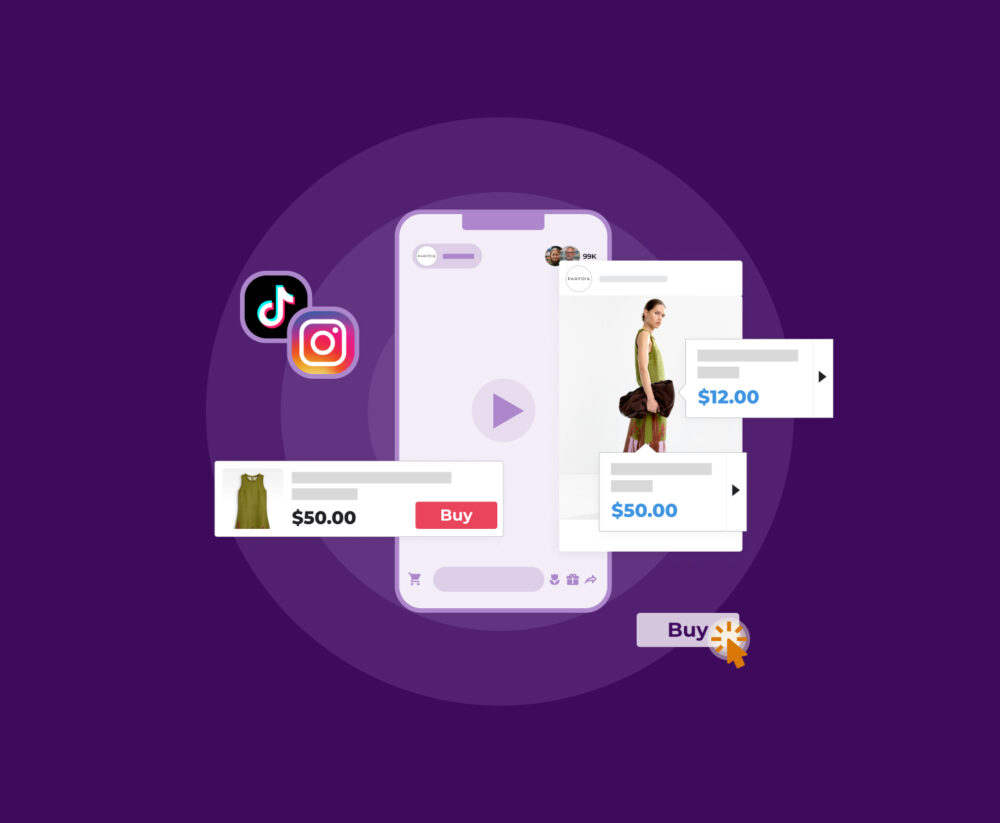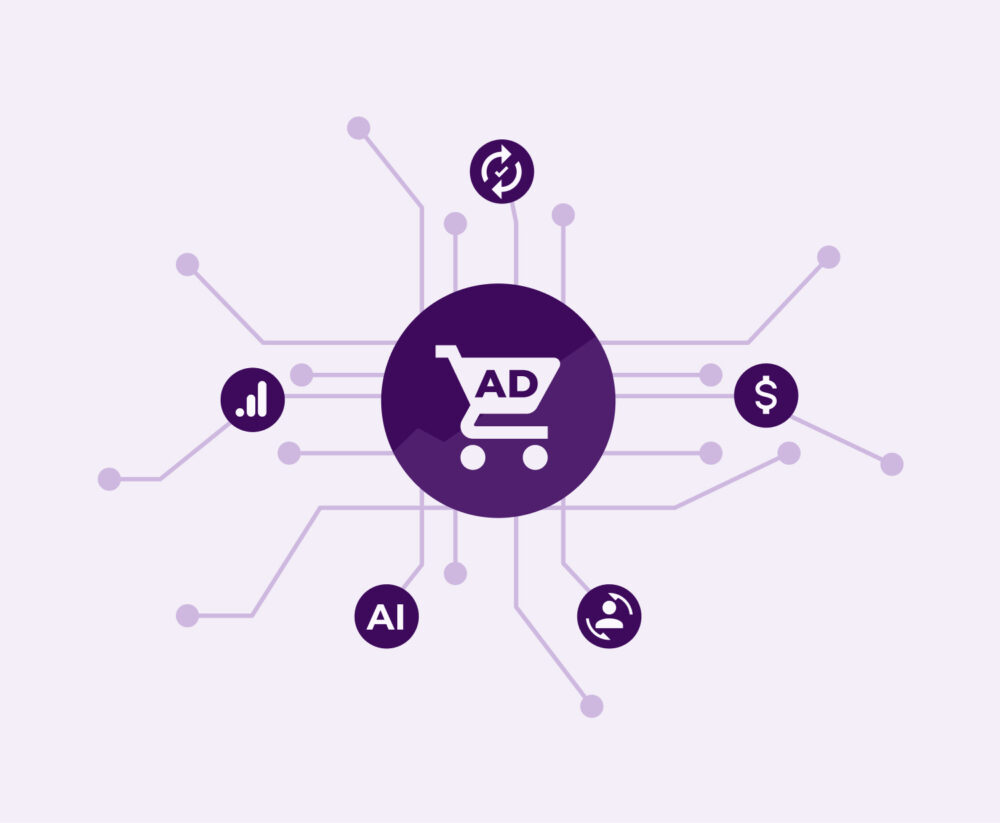10 strategies to improve the visibility of your online products and stand out from the competition
One of the major challenges all companies face is competing in a highly competitive market as e-commerce, focusing on the products and services they offer at the same time. According to a study conducted by CBRE, it is estimated that in Spain alone, online sales will account for 14% of total sales by 2025.. In this context, it is essential for businesses to create product visibility strategies to make their products stand out from the competition.
On another hand, e-commerce sales in the FMCG sector reached €5,268 M per year by September 2023, increasing purchases through this channel by 0.5% over the previous period. Thus, with a clearly booming market such as the retail sector, where the online offer is increasing, it is essential to create a strategy that emphasizes the presence of your brand and product above the rest.
Digital Shelf Analytics as a competitive advantage in the industry
Within this framework, the Digital Shelf plays a key role, since these virtual shelves depend on a constant process of monitoring and analysis to achieve greater competitive advantage in the sector. The more visible a product becomes and the better use is made of analytics, the greater the control over it and over the competition.
Here are ten tips to improve the visibility of your online products and make them stand out from your competitors.
1. Relevant and high-quality content
To attract the attention of consumers, it is essential to create a high-quality content strategy around your product. This provides not only product information, but an added value that the consumer will appreciate above the rest. Resources such as infographics, videos or articles about the product or about possible doubts, will help to attract the audience and, therefore, to improve the visibility of your offer. This aspect is also enhanced by Digital Shelf analytics, as it helps your pages to be optimized and in full detail. This way you will be able to control at all times how the information performs and how relevant it is to your customers.
2. Updated information
It is also necessary that the content is updated over time to avoid a lack of information that could punish you in the eyes of the customer. Accompanying product pages with real images give them an added value, which will facilitate the buyer’s final decision. On another hand, maintaining constant information helps your business to boost its relevance and competitiveness. This allows you to adjust a product offering according to market fluctuations and implement the necessary changes to boost its attractiveness in the eyes of the consumer. Digital shelf analytics make it easier for you to optimize your stock, keep information under control and help the buyer to have confidence in the product and the brand. Displaying updated information implies that the brand is committed to quality and transparency.
3. Optimization of your product pages
Just as important as product availability is the information offered about the product. Offering reliable content about the product is essential to achieve the transaction, since 81% of users who buy online say that they have previously informed themselves before making a purchase. Thus, well updated product pages provide detailed information to the consumer, but also an advantage to the seller. As we have mentioned in previous posts, thanks to the optimization of this content, we can control the information of our products when they are sold on other websites and update it quickly and efficiently.

4. Enhancing on-page SEO within retailer sites
The SEO positioning of your products is vital for their visibility. The use of keywords and the choice of titles in the product listings help them to rank high in the search engines of retailers’ websites. It is also recommended that product images are labeled and have descriptive file names. This is one of the key principles of product page optimization, because what doesn’t appear doesn’t exist. The use of these techniques will give a competitive advantage to your business, improving the positioning of your products and enabling the visibility of your brand in the online environment.
5. Establishing a Retail Media strategy
Resorting to online advertising is also another option to consider. Creating bidding campaigns or reaching agreements with retailers to advertise on their website enhances the product image and will help your business to expand outside your domains. In this way, we can establish a retail media strategy to advertise on third party websites and increase product visibility. As in the SEO positioning discussed in the previous point, advertising strategies promote a scalability of the product that can make it stand out from the competition.Subsequent monitoring helps to properly execute the campaigns carried out to get the most out of it.
6. Implementing a Retail Media Monitoring system
Every year, advertising investment in the retail sector is becoming more and more significant. In addition to boosting your marketing campaigns, it is essential that you are aware of how your competitors are advertising within the sector. Thanks to the retail media monitoring offered by a tool such as flipflow, you can monitor your content and that of your competitors in real time and access data that allows you to know at all times how these ads are performing. Through this system, you can obtain information about sponsored products, corporate banners, videos in product pages and even check the proper performance of advertising agreements with distributors. Resorting to a tool of this type helps you to enhance the visibility of the product as you control your digital presence in real time.
7. Apply promotions and discounts
One of the most outstanding resources is to carry out timely promotions or discounts to attract the customer’s interest. Products that are on limited offer attract attention and create a sense of urgency about the purchase, which usually translates into an increase in conversions. It is vital to establish price and promotion monitoring to help us understand how the product is performing in the market. If we use a Digital Shelf Analytics tool, we can also find out which products sell more during these periods of limited offers and create strategies focused on boosting the business based on the data provided by this tool.
8. Enhance comments and reviews
Another aspect you should take into account is to encourage reviews and comments from customers. It has been proven that buyers pay close attention to this aspect before making their final decision. The quality of the products increases credibility in the eyes of the audience. It is advisable to review this section within the product page and try to enhance it as much as possible to gain visibility. Establishing a feedback system with your buyers will also make your product climb among the various purchase options and will give your brand an increase in its notoriety.
9. Monitoring and analyzing performance
When implementing a strategy of this caliber, it is essential to check whether or not it is having an effect. It will be necessary to establish a routine of analysis and monitoring of the different items through the use of tools that measure performance. This is where the use of a cross-functional tool that makes it possible to measure prices and stock, retail media or how your competitors are behaving comes into play. In this way, you can discern which strategies are having an effect and which ones need to be redirected. A good market analytics tool will help you to have as much information as possible within the same monitoring system. This will optimize resources and allow faster and more accurate decision making.
10. Sell on marketplaces
Depending on the type of product offered, the option of selling it on marketplaces such as Amazon or eBay can be considered. These platforms provide greater visibility in market niches where the competition may not have decided to enter. In addition, this option provides companies with a larger customer database than could be obtained in the traditional market. Moreover, if you are the one selling on these platforms yourself, you ensure that you control your product in different channels and can check which sellers are selling it, at what prices and which products are selling best among consumers.
Conclusion
It is critically important to be aware of possible market fluctuations in a highly competitive environment. Also to create a system that enhances data collection in a fast and efficient manner. This way, we can take the best decisions at the right time. Flipflow is the tool that allows you to monitor the behavior of your products, as well as optimize your resources and get the most out of them
Thanks to this omnichannel BI suite, you can monitor sellers and changes in product pages, positioning, as well as advertisements, content or possible stock-outs. The tool offers you both the information of the channel itself, as well as the possibility of controlling other points of sale to which customers can finally resort after having visited your product pages. As a result, you will improve your visibility in a highly competitive market such as the retail sector, regardless of the sales channel.



